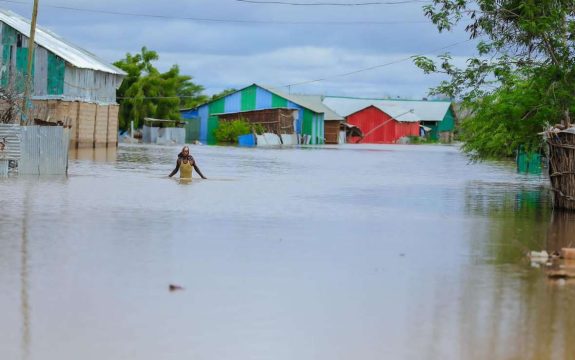East Africa’s floods decimate almost entire rainy season harvest leaving over four million people with no food or income

Oxfam Australia Media Release
As COP28 comes to a close, rich polluting nations must accelerate loss and damage compensation for countries hit hardest by climate change.
Six months after a historic five-season drought, massive floods have inundated vast swaths of farmland across Kenya, Ethiopia and Somalia, right in the middle of the harvest season. Over four million impacted people in dire need of humanitarian assistance, warned Oxfam today.
The torrential rains which began in October, have killed hundreds of people, washed away thousands of homes and destroyed thousands of hectares of farmers’ crops in the three countries. Nearly two million people across the three countries have also been forced to flee their homes and farms.
In Somalia alone, the heavy Deyr (October-December) rains have killed over 100 people and devastated one-fifth of the harvest in South Central Somalia including 1,400 metric tonnes of sorghum in Juba and Shabelle have wilted. It is expected that 1.5 million hectares of farmland in Somalia will be adversely affected by the floods.
“The worsening climate crisis is a harsh reality for those already suffering hunger and destitution in East Africa. Today, millions of people are pummelled by consecutive weather extremes they are hardly responsible for, with absolutely nothing to shield them or help them rebuild their lives.” said Oxfam in Africa Director Fati N’zi-Hassane.
Adan Hassan, a farmer from Bardhere, one of the worst affected regions in Somalia told Oxfam:
“We have lost all our crops. All the tomatoes, watermelons, beans, and carrots that we would have harvested within months were all swept away. More than 80% of the bananas, lemons, and sorghum have also been destroyed. We had just started recovering and the rains have taken everything we have built in the past few months.”
In neighbouring Kenya, the unrelenting floods have displaced over 500,000 people after washing away thousands of their homes, devastating over 21,000 acres of their farmland, and killing 13,500 of their livestock.
Similarly, in Ethiopia’s Somali region, hundreds of thousands have been displaced. The destruction of several roads has hampered transportation and caused prices of food and basic commodities to soar.
Even before this flooding, consecutive and prolonged droughts and ongoing conflict have already caused severe food shortages and massive loss of livestock, leaving 27.4 million people across the three countries in crisis or worse levels of hunger.
“The scale and frequency of climate destruction in East Africa paints a stark picture of the abhorrent climate injustice against disadvantaged countries and communities facing climate extremes,” said Oxfam in Africa Director Fati N’zi-Hassane.
“At this year’s COP28, rich polluting nations – largely responsible for the climate crisis – must honour their obligation to provide climate finance for adaptation and loss and damage, so that East African countries can free up resources to support impacted communities adapt, recover and rebuild their lives,” added N’zi-Hassane.
Like what we do at The AIMN?
You’ll like it even more knowing that your donation will help us to keep up the good fight.
Chuck in a few bucks and see just how far it goes!
Your contribution to help with the running costs of this site will be gratefully accepted.
You can donate through PayPal or credit card via the button below, or donate via bank transfer: BSB: 062500; A/c no: 10495969










1 comment
Login here Register here-
New England Cocky
Return to home pageThe Indian Ocean Oscillation works on both sides of the Indian Ocean, not just around India, SE Asia and NW Australia.